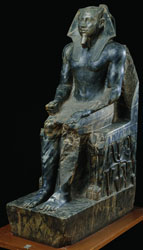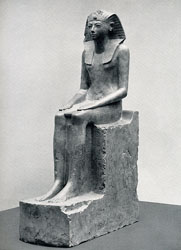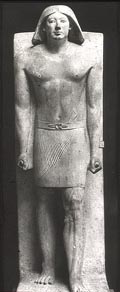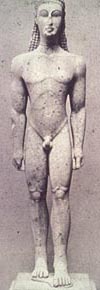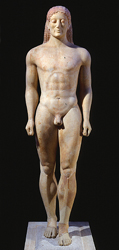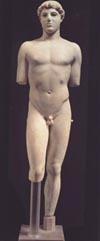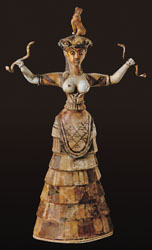Arth Courses | ARTH 200 Assignments
Paper 1
I have decided that it is important for the first paper to get a sense of how you are understanding the material. For the past couple of weeks I have been focusing on traditional major comparisons focusing on Egyptian and early Greek art. I would like you to pick one of the following comparisons and write a three to five page paper responding to the comparison.
| Both of these statues exemplify the convention of the seated figure in Egyptian art. Considering that both are ka statues, consider how this function determines the form that the artists create. Be as specific as possible articulating the similarities. While this comparison demonstrates the continuity and stability of the art of Egypt, scholars have noted that proportions change in the different periods. Demonstrate this. | |
| Scholars have long argued that knowledge of Egyptian art was crucial in the sudden appearance of monumental stone sculpture in late seventh century Greek art. In a comparison of these two works, articulate the important similarities between these two works to support this point. Be as specific as possible. Consider also the different functions of these two works and observe how these have influenced the approaches of the artists to the representation of the human figure. | |
| Compare and contrast these two figures discussing both the continuity and modification of the forms. Be as specific as possible. The Anavysos Kouros is accompanied by an inscription that identifies the figure as "Kroisos." Consider the artist's approach to the representation of Kroisos. | |
| The "Kritios Boy" is seen to exemplify a major revolution in the conception of the human figure in Greek art. Through a comparison of these two works, document as specifically as possible this revolution. Pay special attention to the significant change in the relationship of the work of art to the viewer. | |
| Compare and contrast these images. Consider how elements of the Snake Goddess figure are also found in the Medusa figure, but how the conception of the figure has been transformed. | |
You should be able to respond to these questions on the basis of material linked to from the assignments page and class discussion. I do not expect and I do not encourage any extra research. I would be glad to meet with you to discuss the development of your paper.
Deadlines:
Tuesday, September 27: bring a draft of your paper to class to be workshopped.
Tuesday, October 4: turn in your revised paper. It should be three to five typed pages in length. Make sure that it is paperclipped or stapled. Note that I do not accept electronic copies.
